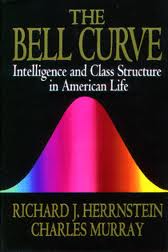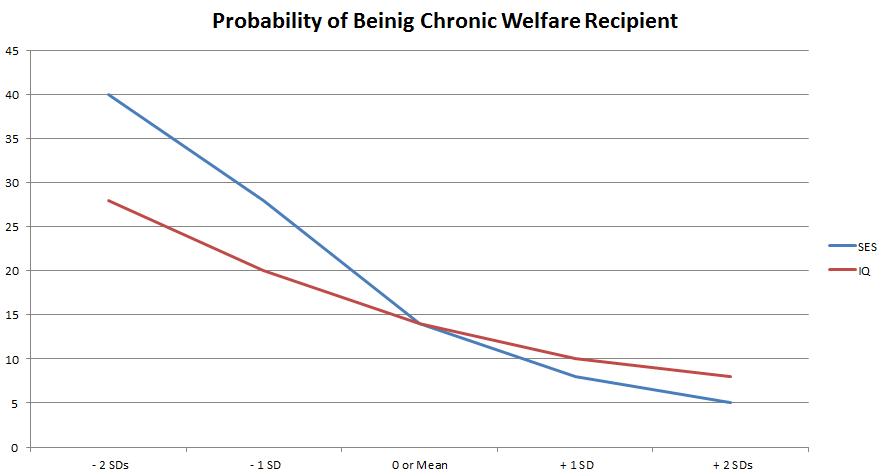We’re moving from “The Family” to “Welfare” in the latest installment on “The Bell Curve.”
The series has been focusing on various snapshots of impact that the wealth of an individual or family may have and then at the impact that IQ may have. Long has the argument been made that much of the disparity in America is due to the fact that the rich get richer while the poor get poorer.
Perhaps it has less to do with the wealth of the family and more to do with the IQ of the family.
So, moving towards welfare.
Previously I posted on the probability of going on welfare, within one year, after the birth of the first child. I posted on this probability using only the socioeconomic status of the family. Here I show both the SES and the IQ of the mother:
The impact is significant. Even more so after accounting for the fact that a woman with higher IQ would be able to avoid the condition that would result in welfare. Yet, after accounting for age, poverty, marital status and SES, we see that IQ plays a massive role in the probability of welfare reliance.
Next, the topic of chronic welfare dependency. The data suggests see below, that SES plays at least as important a role as IQ does. However, the data is restricted to the point that makes it important to point out a note. Of the women in the study that were long term recipients of welfare, none scored in the quintile of cognitive ability; only 5 were in the second quintile.
With that caveat, here is the data:
Both the economic background of the mother AND the IQ play a part. As I mentioned in the original post, education may be the relevant influence on this topic.



